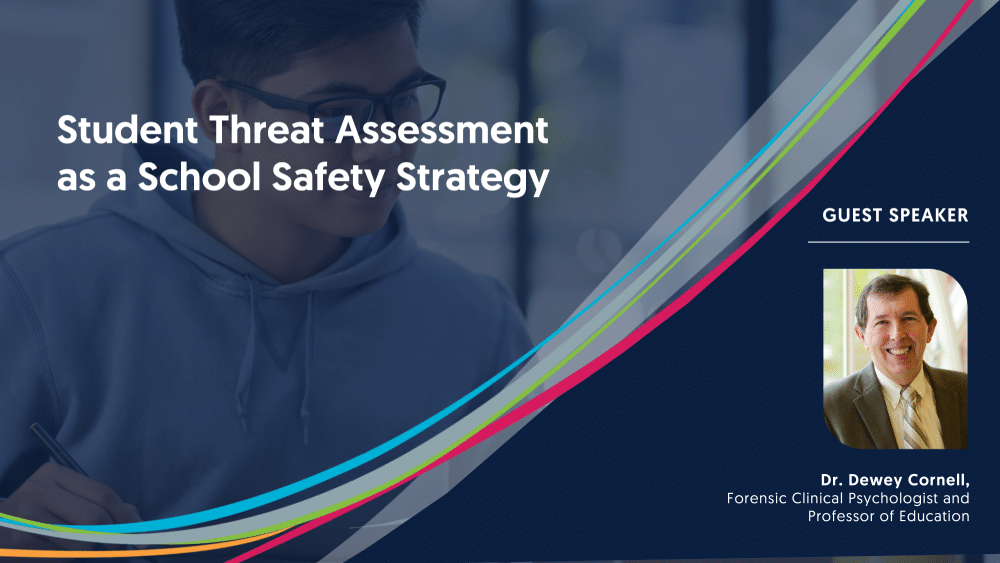
Dr. Dewey Cornell, Professor of Education at the University of Virginia, covers the Comprehensive School Threat Assessment Guidelines, an evidence-based threat assessment program that is used in schools nationwide, as well as key steps in implementing the threat assessment at your school.
In this webinar, you will learn:
- How to conduct a student threat assessment
- Key steps to implementing threat assessment in your school or district
- Effective and ineffective responses to school violence
- Safety resources available to schools and districts
Dr. Dewey Cornell trained originally as a clinical psychologist to work with children and adolescents. Over the past 30+ years he has authored more than 200 publications in psychology and education, initiated statewide school climate surveys in Virginia, and developed the Virginia Student Threat Assessment Guidelines. He has trained thousands of school-based threat assessment teams in the U.S. and Canada.